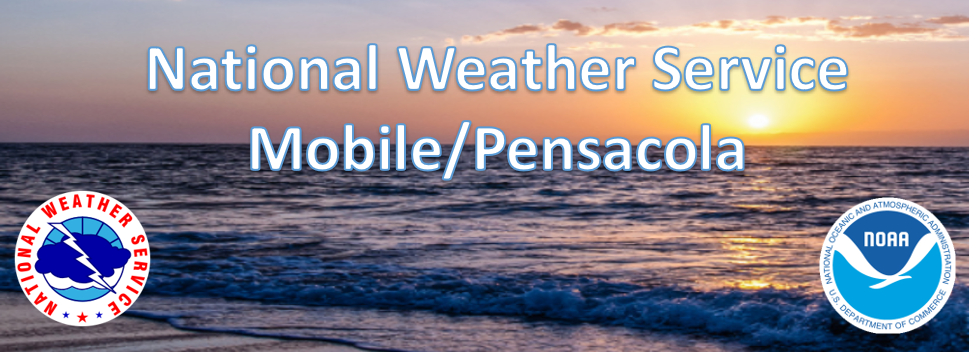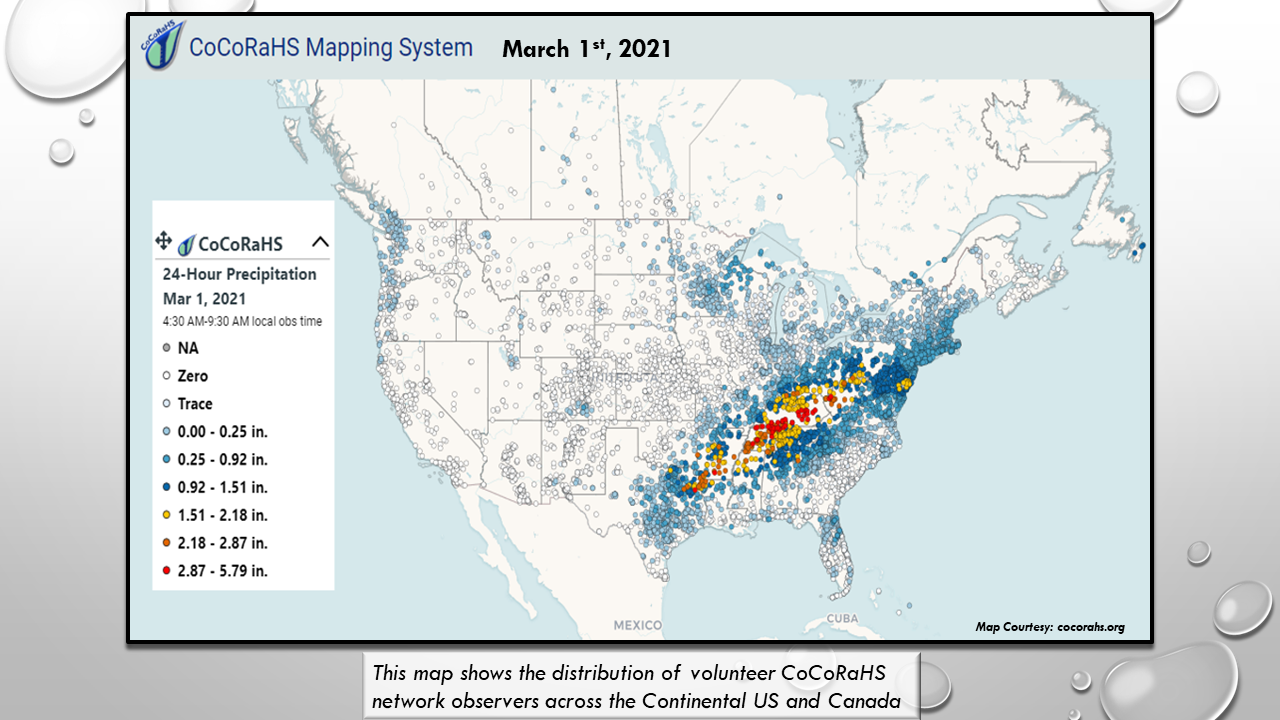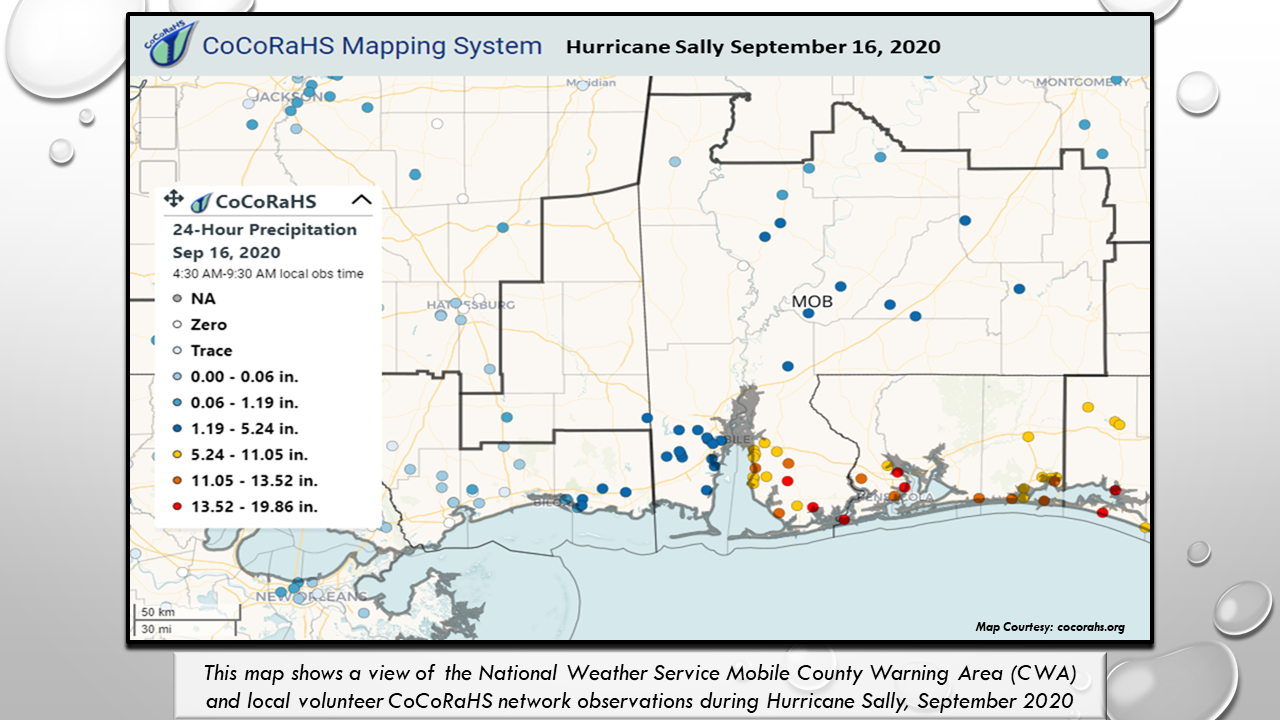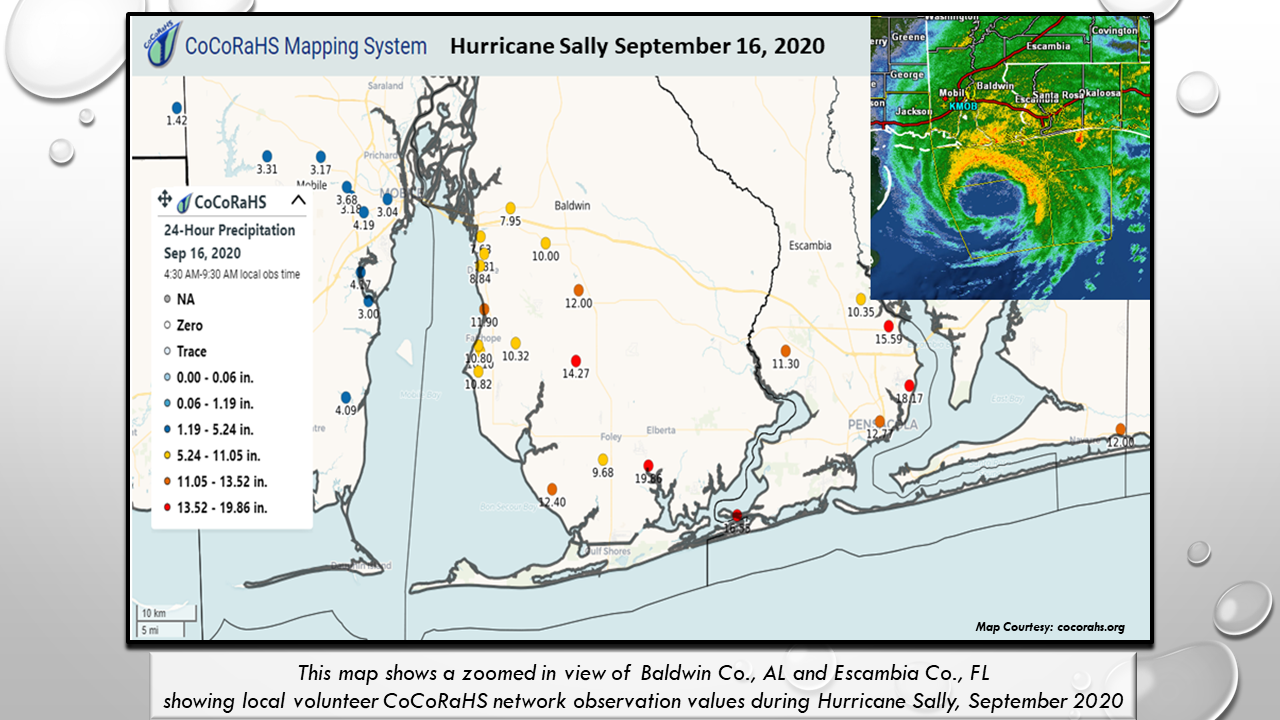
Weather Enthusiasts Needed! We need your help observing the weather!
Do you ever wonder how much rainfall you received from a recent thunderstorm? If so, a volunteer weather observing program needs your help! The Community Collaborative Rain, Hail, and Snow network, or CoCoRaHS, is looking for new volunteers across southeast Mississippi, southwest Alabama, and the western Florida Panhandle. This grassroots effort is part of a growing national network of citizens who report precipitation, right from their home, with a goal of providing a high density precipitation network that will supplement existing observations.
Given the highly variable pattern of rainfall over the central Gulf coast, it's important to understand just how much rain fell in a particular area. How many times have you heard the rainfall report on TV, radio or social media from an official observation and thought to yourself, “That's not what I got?!?”. This is your chance to help! By providing your daily precipitation data, you truly help many folks in one way or another -- whether it's National Weather Service meteorologists, agricultural interests, forestry officials, water management employees, or emergency-management personnel.
CoCoRaHS came about as a result of a devastating flash flood that hit Fort Collins, Colorado, in July 1997. A local severe thunderstorm dumped over a foot of rain in several hours while other portions of the city had only modest rainfall. CoCoRaHS was born in 1998 with the intent of doing a better job of mapping and reporting intense storms. Florida became the twenty-third state to establish the CoCoRaHS program in 2007, and today, the CoCoRaHS network had reached all 50 states, Canada, and the Bahamas. On most days, nine to ten thousand observations are being reported across the country. Through CoCoRaHS, thousands of volunteers, young and old, document the size, intensity, duration and patterns of rain, hail, and snow by taking simple measurements in their own backyards. Here is a look at a recent national map of the CoCoRaHS network, followed by a close-up of how CoCoRaHS observers in the National Weather Service Mobile/Pensacola local area contribute valuable, high quality precipitation observations during a major water event which was Hurricane Sally from mid September 2020.

 |
 |
Volunteers may obtain an official rain gauge through the CoCoRaHS website www.cocorahs.org for about $30 plus shipping. In addition to the 4 inch plastic rain gauge, volunteers are required to take a short online training module and then can use the CoCoRaHS website or mobile app to submit their daily reports (preferably around 7:00 AM EST). Observations are immediately available on maps and reports for the public to view. The process takes less than five minutes a day, but the impact to the community is tenfold: By providing high quality, accurate measurements, the observers are able to supplement existing networks and provide useful results to the National Weather Service, other scientists, resource managers, decision makers and other users.
How does one become a CoCoRaHS observer? Go to the CoCoRaHS website above or below and click on the “Join CoCoRaHS” emblem on the upper right side of the main website. After registering, take the simple online training, order your 4 inch rain gauge and start reporting! because "Every Drop Counts!"
If you have any additional questions please contact NWS Mobile/Pensacola Observation Program Leader Joe Maniscalco – joe.maniscalco@noaa.gov